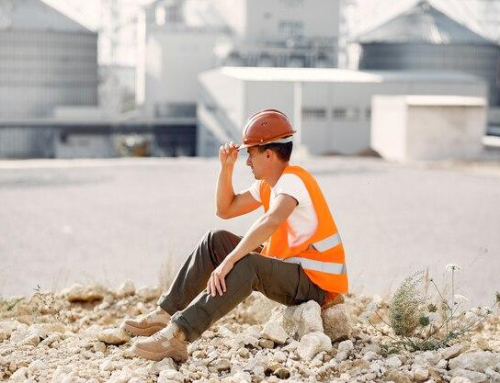The world of elevator technicians exists in the vertical realm, where heights are not just a part of the job; they are the job.
As these skilled professionals ascend and descend elevator shafts, guaranteeing the safety of each technician becomes paramount. Fall protection is not just a regulation; it’s a lifeline in the vertical world.
In this comprehensive guide, we’ll explore the importance of fall protection for elevator technicians, examining the risks they face and the measures necessary to keep them secure in their high-stakes workplace.
Understanding the Risk
1. Elevated Heights and Unpredictable Environments:
Elevator technicians operate in dynamic environments, often working at considerable heights within confined elevator shafts. The risk of falls is inherent, and without proper training and precautions, the consequences can be severe.
2. Limited Space and Accessibility Challenges:
Elevator shafts are notorious for their limited space and accessibility challenges. Technicians may need to navigate tight corners and awkward angles, making it essential to have fall protection measures that are not just effective but also adaptable to these unique working conditions.
3. Equipment-Related Hazards:
Working with heavy tools and equipment in an elevated environment introduces the risk of dropped objects, posing a threat not only to the technician but also to those below. Fall protection training must encompass strategies for securing tools and preventing accidents.
Essential Fall Protection Techniques for Elevator Technicians:
1. Comprehensive Training Programs:
The foundation of fall protection for elevator technicians lies in comprehensive training programs. These programs should cover the unique challenges of working in elevator shafts, emphasizing hazard recognition, proper use of equipment, and emergency response procedures.
2. Personal Protective Equipment (PPE):
Elevator technicians should be equipped with specialized PPE designed for their work environment. This includes harnesses, lanyards, and retractable lifelines tailored to the challenges of confined spaces and vertical work.
3. Anchorage Systems for Confined Spaces:
Confined spaces require specialized anchorage systems that can be securely attached within the tight confines of an elevator shaft. These systems should not only meet industry standards but also accommodate the challenges posed by limited space.
4. Tool Tethering Systems:
To prevent dropped objects and the associated risks, elevator technicians must use tool tethering systems. These systems secure tools to the technician, minimizing the potential for accidents caused by falling objects.
5. Rescue and Retrieval Plans:
In the event of a fall, prompt rescue is crucial. Fall protection training should include comprehensive rescue and retrieval plans, making sure that technicians can be quickly and safely extracted from an elevator shaft.
6. Regular Equipment Inspections:
Reliable fall protection begins with well-maintained equipment. Elevator technicians should undergo regular equipment inspections, making certain that harnesses, lanyards, and anchorage systems are in optimal condition and comply with safety standards.
7. Heightened Awareness of Surroundings:
Fall protection training should instill a heightened awareness of the surroundings. Elevator technicians need to be adept at recognizing potential hazards, assessing risks, and making informed decisions to mitigate dangers.
8. Emergency Communication Protocols:
Communication is key, especially in emergencies. Elevator technicians should be well-versed in communication protocols to relay critical information to their team and emergency responders swiftly.
9. Simulated Emergency Drills:
Practical experience is invaluable. Simulated emergency drills provide elevator technicians with hands-on training, allowing them to apply fall protection protocols in a controlled environment and enhancing their responsiveness in real-life scenarios.
10. Collaboration and Team Training:
Working in teams is common for elevator technicians. Fall protection training should emphasize effective communication and collaboration among team members, warranting a collective commitment to safety.
The Human Element: Elevator Technicians’ Perspective
Beyond the technical aspects of fall protection, understanding the human element is crucial. Elevator technicians often operate under tight schedules and must balance efficiency with safety. In this context, training programs that resonate with the daily challenges these professionals face are essential.
At Metro Safety Training, we blend technical expertise with a deep understanding of the human experience, making certain that our fall protection training is not just a set of procedures but a practical and meaningful approach to safeguarding lives.
Empowering Technicians: A Holistic Approach
Safety is not a standalone concept; it’s a culture. Elevator technicians, being at the forefront of vertical transportation, deserve a holistic approach to fall protection. This includes fostering a culture of continuous improvement, where safety is not just a set of rules but an integral part of the work ethic. Metro Safety Training empowers technicians not only with technical skills but also with a mindset that prioritizes safety at every step.
Elevating Safety with Metro Safety Training:
At Metro Safety Training, we understand the unique challenges that elevator technicians face in the vertical world. Our fall protection training programs are tailored to address the specific risks of working in confined spaces and elevated environments. We prioritize not only compliance with regulations but also the real-world safety of every technician.
Why Choose Metro Safety Training for Fall Protection?
- Tailored Programs: Our fall protection training programs are specifically designed for elevator technicians, addressing the nuances of their work environment.
- Experienced Instructors: Learn from seasoned professionals who bring real-world experience to the training room, providing insights that go beyond theoretical knowledge.
- Cutting-Edge Simulations: Our simulated emergency drills recreate scenarios elevator technicians might encounter, offering practical, hands-on experience in a controlled setting.
- Compliance and Beyond: We go beyond regulatory compliance, focusing on a proactive approach to safety that equips technicians with the skills and mindset to address challenges effectively.
Your safety is our priority. Elevate your fall protection training with Metro Safety Training. Talk to us today to enroll in our specialized programs and improve fall protection for elevator technicians in the vertical world.
Elevate with Confidence!
At Metro Safety Training, our commitment goes beyond compliance; it extends to the well-being of the professionals who keep the world moving. Contact us now, and let’s build a safer, more secure vertical world together.
Enroll in our fall protection courses, first aid training, or confined space training today and enhance your workers’ workplace safety!











